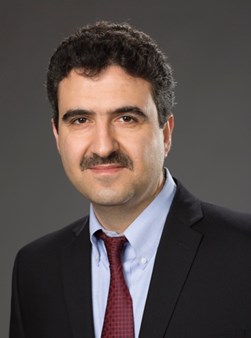
Dr. Murat Yuksel
University of Nevada
Tuesday, April 26, 2016
11:00AM – HEC 356
Abstract
Recent proliferation of wireless technologies and choices available to user applications have triggered a tremendous wireless demand, and the wireless nodes are expected to dominate the Internet soon. Accommodating this exploding wireless demand with cellular capacity does not seem possible in the long run. As the RF spectrum is getting scarcer and saturated by recent innovations in attaining high spectral efficiency gains, we urgently need innovations that will enable leveraging of new wireless spectrums and substrates in order to respond to the exploding mobile wireless traffic demand. Further, the capacity gap between radio frequency (RF) wireless and optical fiber backbone speeds will remain huge because of the limited availability of RF spectrum. This gap in the “last mile” of the Internet is getting more troublesome as Internet-of-Things (IoT) is becoming a reality and more things around us need wireless connectivity. Enabling optical spectrum in wireless communications is the needed revolution for high-speed mobile networks of the future.
In this talk, I will present our work on exploring the potential for free-space-optics (FSO), a.k.a. optical wireless, in the context of very-high-speed mobile ad-hoc and opportunistic networking. We introduce basic multi-element building blocks and prototypes for multi-hop FSO-based mobile networking. 3-D spherical structures covered with inexpensive FSO transceivers (e.g., LED/VCSEL and photo-detector pair) solve issues relevant to mobility and line-of-sight (LOS) management via availability of several transceivers per node. Such structures facilitate electronic LOS tracking (i.e., “electronic steering”) methods instead of traditional mechanical steering techniques used in FSO communications.
Biography
Murat Yuksel is an Associate Professor at the CSE Department of the University of Nevada – Reno (UNR), Reno, NV. Prior to UNR, he was with the ECSE Department of Rensselaer Polytechnic Institute (RPI), Troy, NY as a Postdoctoral Associate and a member of Adjunct Faculty until 2006. He received a B.S. degree in computer engineering of Ege University, Izmir, Turkey in 1996. He received M.S. and Ph.D. degrees in computer science of RPI in 1999 and 2002 respectively. He worked as a software engineer at Pepperdata, Sunnyvale, CA and a visiting researcher at AT&T Labs and Los Alamos National Lab. His research interests are in the area of networked, wireless, and computer systems with a recent focus on big-data networking, UAV networks, optical wireless, public safety communications, device-to-device protocols, economics of cyber-security and cyber-sharing, routing economics, network management, and network architectures. He is a senior member of IEEE, senior and life member of ACM, and was a member of Sigma Xi and ASEE.